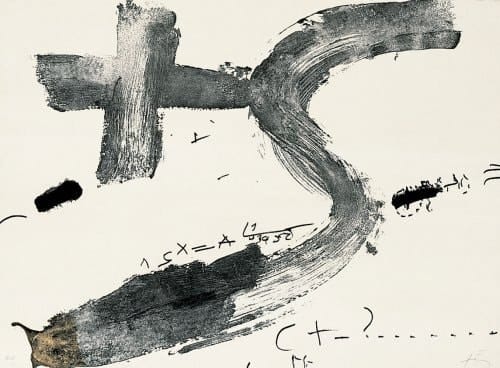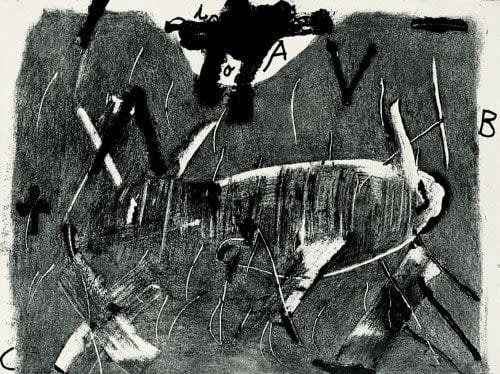Antoni Tàpies
Antoni Tàpies was a Spanish Catalan artist, known for his mixed-media practice incorporating found objects and natural materials. Tàpies is also credited with introducing contemporary abstract painting into Spain. Social themes run throughout his highly textured and tactile artworks, influenced by political philosophy and the post-war state of the Spanish government.
Born Antoni Tàpies i Puig on December 13, 1923 in Barcelona, Spain, the painter, sculptor, and lithographer began his career working within Surrealist traditions, notably influenced by fellow Catalan Joan Miro and Paul Klee. In 1950 he saw the work of Jean Dubuffet, which turned him away from Surrealism and toward abstraction. Tàpies began in 1955 to work with a thick impasto, and these “matter” paintings, similar in their power and individuality to American Abstract expressionist paintings, secured his world reputation. In his later works Tàpies began incorporating real objects such as buckets, mirrors, and silk stockings in his paintings—and even larger objects, as in his assemblage Desk and Straw (1970), in which an actual desk serves as the “canvas”. His works of lithography were noted for their cryptic, spontaneous effects. He also collaborated with poet Joan Brossa on a number of illustrated books.
In 1990 the Tàpies Foundation, which housed some 2,000 works by the artist, opened in Barcelona. Tàpies received the Japan Art Association’s Praemium Imperiale prize for painting that same year. He was elevated to the Spanish nobility in 2010 with the hereditary title marqués de Tàpies. He died on February 6, 2012 in Barcelona, Spain where the Fundació Antoni Tàpies is located.




